The first dinosaurs appeared on Earth approximately 233 million years ago. Then there were not six continents on our planet – all living creatures lived on a vast territory known asPangaeaOver time, this supercontinent began to fall apart, and during this entire period, huge lizards continued to live and develop. Typically, fossilized remains of dinosaurs are found in the United States, so for hundreds of years, scientists were sure that they were not found on Russian lands. However, new scientific discoveries indicate the opposite – at least in the Jurassic period, present-day Siberia was a warm and humid place. Dozens of dinosaur species lived there, and now we’ll talk about the five most interesting of them.
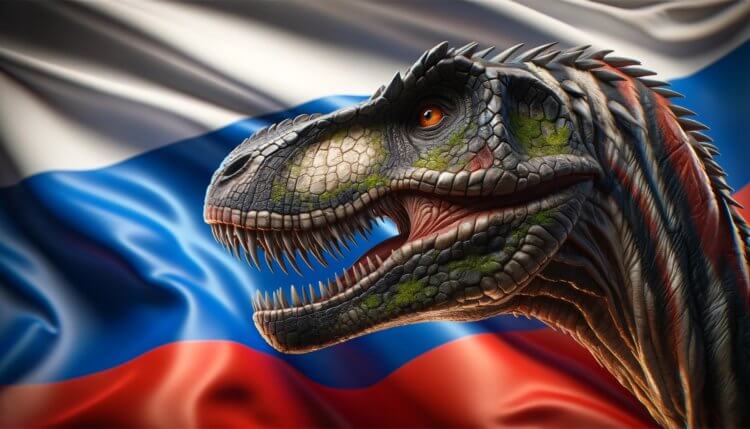
Many people don’t even suspect it, but dinosaur remains were also discovered in Russia
Jurassicc is part of Earth's history between about 201-145 million years ago. This period lasted 56 million years, during which planet Earth changed its appearance and became home to many species of dinosaurs.
Contents
- < li>1 Kulindadromei – dinosaurs of the Transbaikal region
- 2 Giant dinosaurs in Russia
- 3 The most unusual dinosaurs found in Russia
- 4 Dinosaurs with a crest in Russia
li>
Kulindadromei – dinosaurs of the Transbaikal region
One of the most ancient dinosaurs that once lived in Russia a long time ago is Kulindadromeus. For the first time, the remains of this ancient creaturewere found in 2010in the Kulinda Valley in the Trans-Baikal Territory. In the mid-Jurassic period, this place was volcanically active, so during eruptions the bodies of dead dinosaurs were covered with ash. The skin and bones of the ancient creatures burned away, and imprints of the body remained in the rocks. Thanks to them, scientists know in detail what the dinosaurs of the Transbaikal region were like.
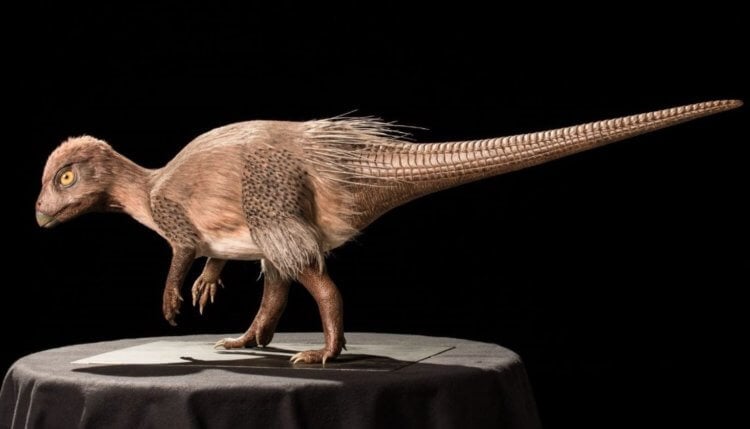
Appearance of Kulindadromeus – a dinosaur of the Trans-Baikal Territory
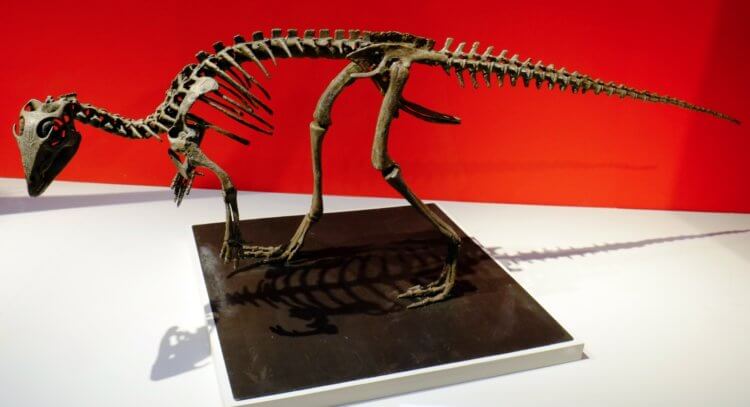
Skeleton of Kulindadromea
Kulindadromea were herbivorous creaturesapproximately 1.5 meters long.Their hind legs were longer and stronger than their front legs – it is believed that they predominantly walked on two legs. The hands of the front paws and the tail of these creatures were covered with scales. The rest of the body of the kulindadromei was covered with light fluff. It is believed that it helped dinosaurs regulate their body temperature.
Interesting fact:many people have not even heard of kulindadromei, but the appearance of these creatures was placed on the flag and coat of arms of Chernyshevsky in 2016 region of the Trans-Baikal Territory.
Giant dinosaurs in Russia
In science fiction films about dinosaurs, we are sometimes shown giants with long necks. Such creatures also lived on the territory of Russia – for example, in 1997, the remains of one of the representatives of the diplodocoid superfamily (Diplodocoidea) were found in the Moscow region. The giants discovered in the USA reached 34 meters in length. However, the individual found on Russian territory was no more than 10 meters in length.
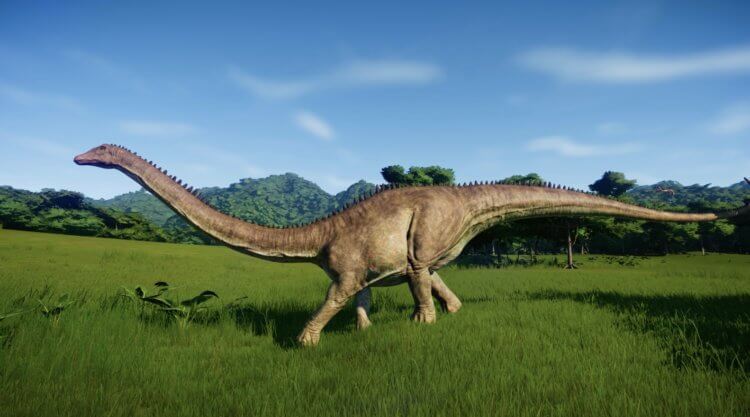
Just imagine that such creatures walked through the territory of present-day Moscow – it’s amazing !
Scientists could not say for sure what species this individual belonged to. Most likely, the mysterious dinosaur lived on one of the islands of the Central Russian Sea. After death, he ended up in the water and was eaten by predators – which is why scientists were able to find only vertebrae.
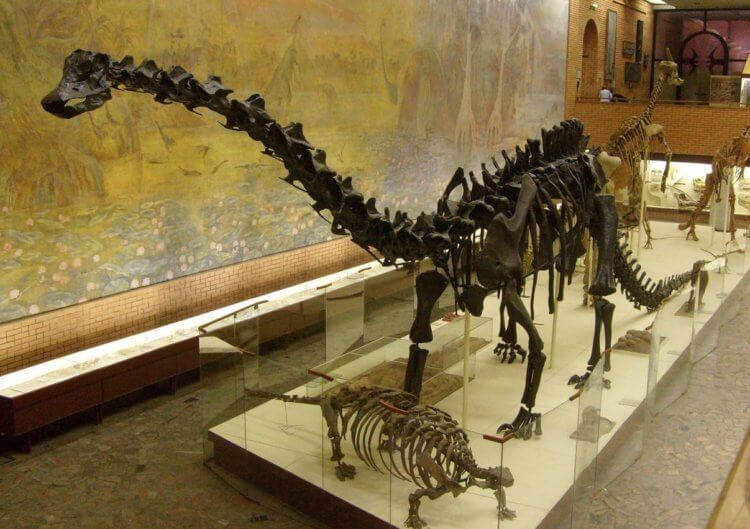
Diplodocoid skeleton
It is known that diplodocoids ate plants – they could reach the highest branches on trees thanks to their long necks . They fought off predators on land with their long and powerful tail. It is believed that their hind legs were longer than their front legs to give them the ability to stand on two legs and reach even higher branches.
Read also:A dinosaur with a 15-meter neck lived on the territory of China
The most unusual dinosaurs found in Russia
Dinosaurs on the territory of present-day Russia could be not only small and large. Some of them had an extremely unusual appearance. An example is the psittacosaurus (Psittacosaurus) – horned dinosaurs, whose name in Russian is literally translated as “parrot-lizard.”
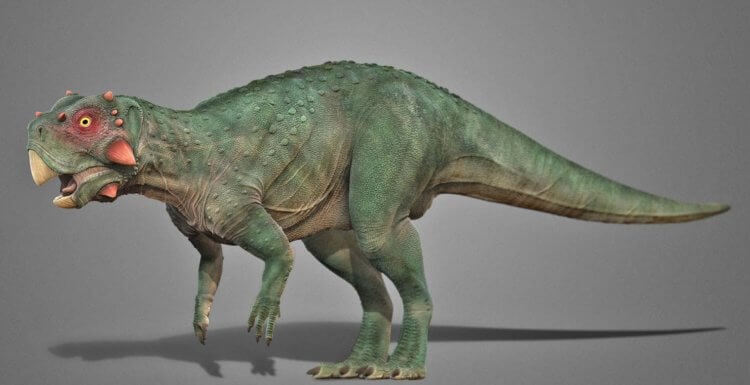
Appearance of Psittacosaurus
The remains of Psittacosaurus were found in Russia in the mid-20th century in Siberia. They were 2 meters long and weighed about 20 kilograms. As the name suggests, they had horns, and their mouth was like a bird's beak.
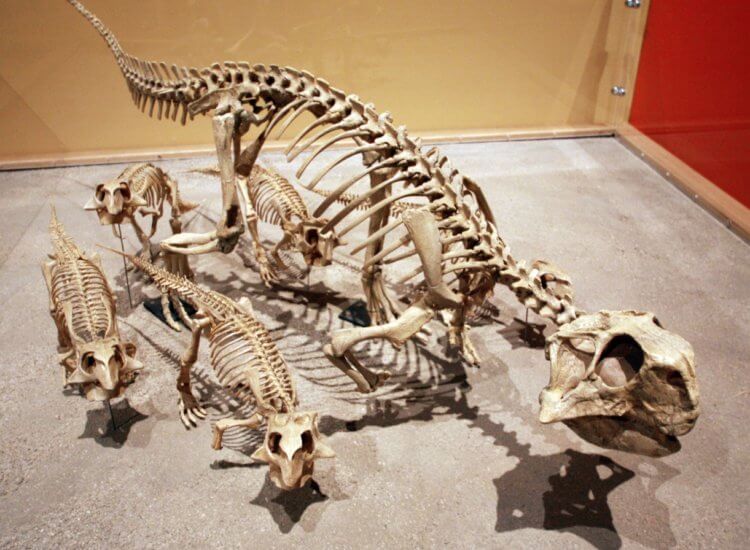
Psittacosaurus skeleton
It is believed that they lived near water and ate plants. The presence of a beak hints that they could also eat seeds by splitting their hard shell. They couldn't chew hard plants, so they swallowed them whole. To digest food, they swallowed stones, which crushed the food directly in the stomach. Today, chickens, parrots and other types of birds do this.
Interesting scientific discovery:Huge dinosaurs appeared on Earth after the rain did not stop for 2 million years
Dinosaurs with a crest in Russia
In 2001, near the Amur village of Kundur, scientists found the remains of a dinosaur of the Olorotitan species. In Russian, this name can be literally translated as “giant swan.” We are not talking about some vertebra or part of the skull – they discovered a complete skeleton.
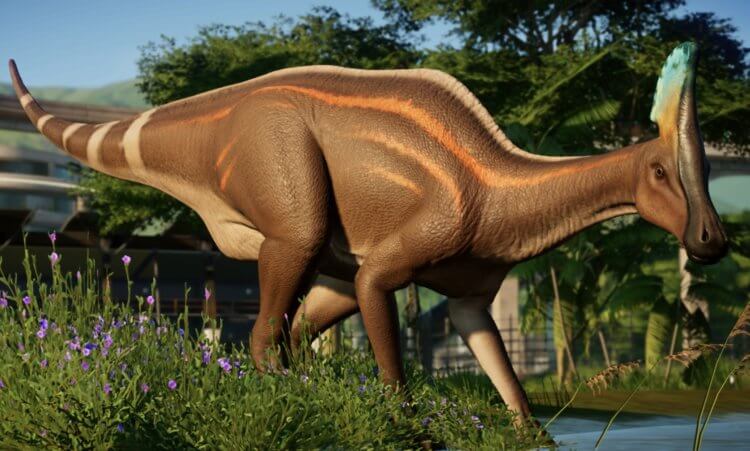
Olorotitan appearance
Olorotitansreached 10 meter lengthand had a unique crest on the skull, which in its shape resembled an ax. According to one version, this bone formation was necessary to enhance the voice of dinosaurs. Another version says that this comb was used to regulate body temperature. It could also be needed to attract the attention of members of the opposite sex.
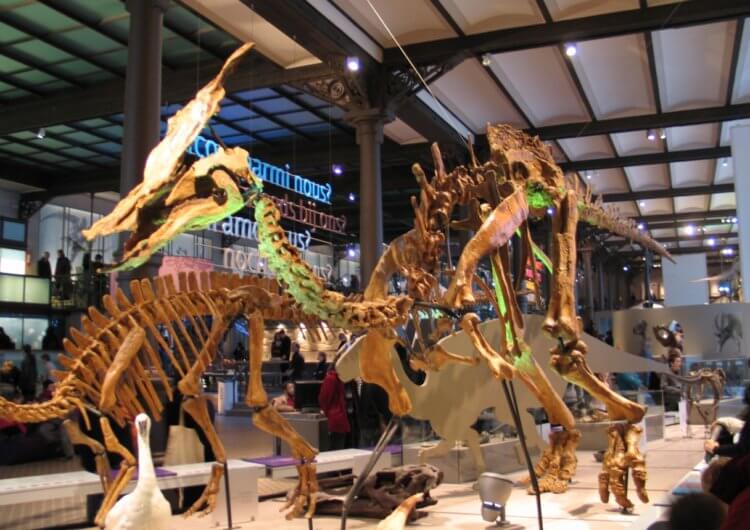
Olorotitan skeleton
Scientists have long studied the Olorotitan skull and found out that he had a very good sense of smell, but his vision and hearing were poor. Perhaps this feature was present in all representatives of the species. The found individual showed traces of malignant tumors, as well as signs of a predator attack.
Want even more interesting materials?Then subscribe to our Zen and Telegram channels!
< p>Interesting discoveries in the field of dinosaur research are made every year. If you are interested in this topic, be sure to read our article “The most important scientific discoveries about dinosaurs for 2023.”